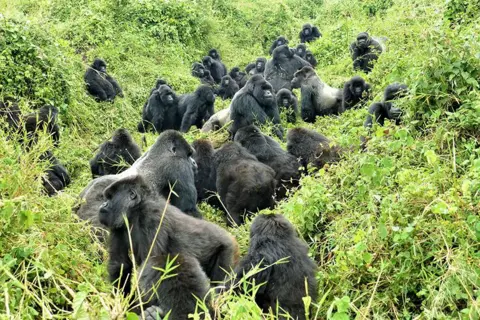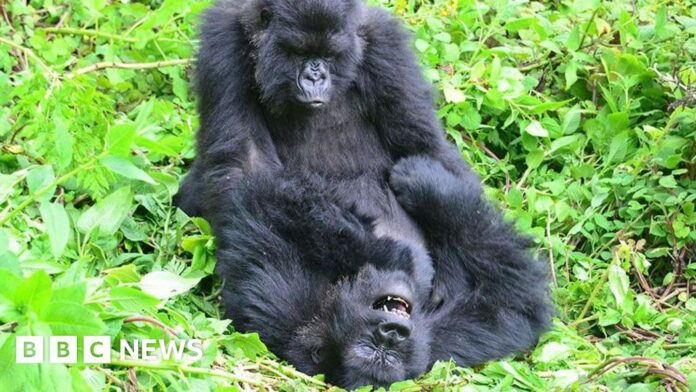Science correspondent, BBC News
 Dian Fossey Gorilla Fund
Dian Fossey Gorilla FundThe relationships built up between female mountain gorillas are more important than previously understood, new research from Rwanda suggests.
It shows that when one of these social great apes moves into a new group, she will seek out and join another female she already knows.
Scientists based the research on 20 years of data covering multiple groups of gorillas in Volcanoes National Park, in Rwanda.
The scientists found that even when two females had been apart for many years, a newly arrived gorilla would still try to join a female she had formed a previous connection with.
 Dian Fossey Gorilla Fund
Dian Fossey Gorilla FundThe findings, published in the Royal Society Journal Proceedings B, show how important the relationship between two individual females is in gorilla society.
“Scientifically, I don’t know if I can talk about ‘friendship’,” explained lead researcher Victoire Martignac, a PhD researcher form the University of Zurich. “But we’re showing here that these same sex relationships really matter.”
Moving into different groups is key in shaping the animals’ social structure. It’s something that both males and females do – females will sometimes move several times throughout their lives.
This dispersal, as it’s known, plays a role in avoiding inbreeding, spreading gene diversity and shaping social relationships.
“In the wild it is very important,” explained Ms Martignac.
“But it’s extremely hard to study, because once individuals leave a group, it’s hard to keep track of them.”
Working in partnership with the Dian Fossey Gorilla Fund, at a field site that has been monitored since 1967, Ms Martignac and her colleagues were able to track those movements.
Poring through decades of information on the animals’ lives, the scientists followed the “dispersals” of 56 female mountain gorillas – examining which new group they chose to join and why.
The gorillas avoided groups that had males they were likely to be related to, but the presence of females they knew also “mattered a lot”, Ms Martignac explained.
The females gravitated towards their “friends”, even if the animals had been apart for many years.
They would often gravitate to a group with females they had grown up with, even if that was many years ago. They also sought out individuals with whom they had made a social connection – perhaps played and interacted with – recently.
 Dian Fossey Gorilla Fund
Dian Fossey Gorilla FundMs Martignac explained that the gorillas would invest in these relationships because they deliver key social benefits.
“New arrivals usually start at the bottom of the social hierarchy,” she said. “Resident females can be pretty aggressive towards them, because they’re potentially a competitor.”
Moving around is something that is also crucial in shaping human society. And the researchers say that studying its roots in other great apes can shed light on the evolutionary driving forces behind it.
“Movement is a huge part of the way we live,” said Ms Martignac. “But those decisions do not fossilise.
“So we look at them in our closest evolutionary cousins.”
This new insight into gorillas’ social lives, she added, “reframes how we think of female-female social relationships”.
“They’re much more important to these animals than we used to think.”




